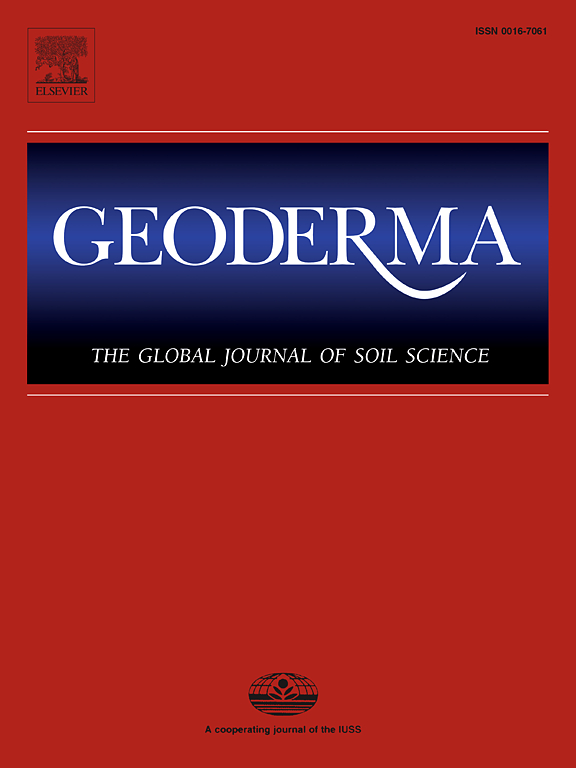Synchrotron-based 3D X-ray computed tomography reveals root system architecture: Plastic responses to phosphorus placement
IF 5.6
1区 农林科学
Q1 SOIL SCIENCE
引用次数: 0
Abstract
We used synchrotron-based X-ray computed tomography (SRXCT) to visualize root distribution in soil cores. X-ray CT is emerging as a leading technique to study plant roots, but SRXCT offers potential advantages compared with conventional X-ray sources, including producing X-rays of higher intensity that are collimated, monochromatic and tuneable; delivering high-resolution data whilst avoiding issues such as beam-hardening and source divergence. We demonstrate the suitability of SRXCT for observing the root system of wheat plants growing in two soils (Calcisol and Ultisol) in response to placement of different phosphorus fertilisers. To optimize scanning quality, we tested the use of an inverse ‘mask’ in front of the soil cores to achieve a more uniform attenuation along the sample, thereby avoiding saturation of the detector along the thinnest parts of the soil cores. Secondly, we developed a deep learning approach for segmentation and quantification of root length and diameter. Our results demonstrate the use of SRXCT as a tool for studying root system architecture in soil at high spatial resolution. The SRXCT method marks a new stride towards advancing our understanding of root structures in unprecedented detail, opening further avenues for exploring plant-soil interactions.

基于同步加速器的三维x射线计算机断层扫描显示根系结构:对磷放置的塑性响应
我们使用同步加速器 X 射线计算机断层扫描(SRXCT)来观察土壤核心中的根系分布。X 射线 CT 正在成为研究植物根系的领先技术,但与传统 X 射线源相比,SRXCT 具有潜在的优势,包括产生准直、单色和可调整的高强度 X 射线;提供高分辨率数据,同时避免光束硬化和光源发散等问题。我们展示了 SRXCT 是否适合用于观察生长在两种土壤(钙质土壤和超土壤)中的小麦植株根系对施用不同磷肥的反应。为了优化扫描质量,我们测试了在土壤核心前使用反向 "掩膜 "的方法,以实现沿样本更均匀的衰减,从而避免探测器沿土壤核心最薄部分的饱和。其次,我们开发了一种深度学习方法,用于分割和量化根的长度和直径。我们的研究结果表明,SRXCT 是一种在高空间分辨率下研究土壤根系结构的工具。SRXCT 方法标志着我们在以前所未有的细节推进对根系结构的理解方面迈出了新的一步,为探索植物与土壤的相互作用开辟了更多的途径。
本文章由计算机程序翻译,如有差异,请以英文原文为准。
求助全文
约1分钟内获得全文
求助全文
来源期刊

Geoderma
农林科学-土壤科学
CiteScore
11.80
自引率
6.60%
发文量
597
审稿时长
58 days
期刊介绍:
Geoderma - the global journal of soil science - welcomes authors, readers and soil research from all parts of the world, encourages worldwide soil studies, and embraces all aspects of soil science and its associated pedagogy. The journal particularly welcomes interdisciplinary work focusing on dynamic soil processes and functions across space and time.
 求助内容:
求助内容: 应助结果提醒方式:
应助结果提醒方式:


